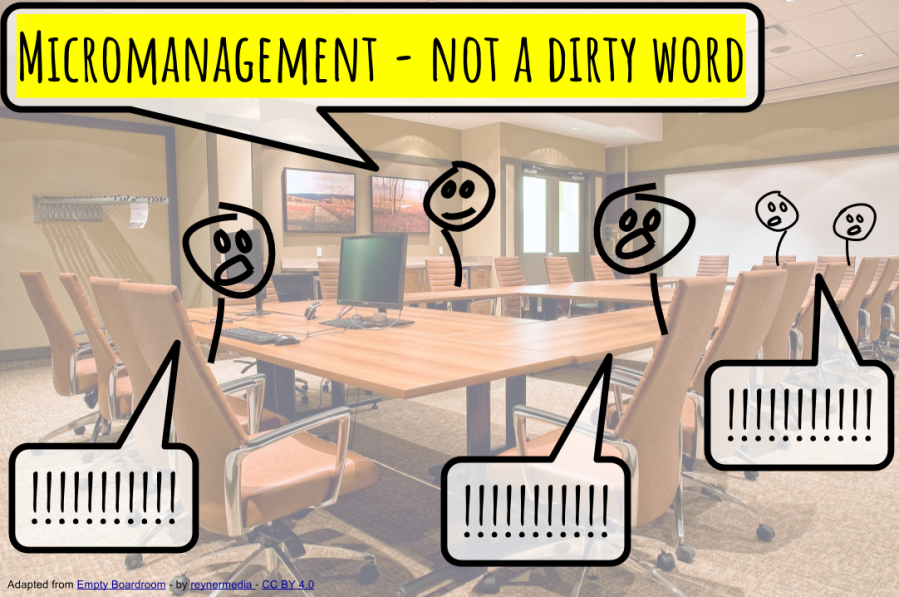Reading time: 7 minutes.
Last year I was in a room with 10 early career teacher leaders being coached on coaching. Some had been sent there, others had made sure they were sent. While examining management styles, I mentioned that ‘some of the best leaders ever are micromanagers’. Within an instant, claws were out and pitchforks were sought: the witch-hunt was on.
You too might be sceptical, but micromanaging can help create a positive climate in your class without burning you or your pupils out. Sounds too good to be true? You just have to limit your interventions to nailing the culture and output.
Giving autonomy and artistic licence through micromanagement
In my last school, the head did this by being exceptionally very clear on what he expected his staff and pupils to achieve while building the right environment from the bottom up. The carefully crafted mission statement very clearly articulated the school’s cultural values and both the head and deputy used it to filter everything the school did. The staff and pupils knew the mission statement too, and it permeated every aspect of school life. The head managed his outputs with obsessive detail too. If it wasn’t good enough, it would be sorted. However, at no point did the staff feel harassed or stifled. Outside of micromanaging the inputs and outputs, he gave us incredible autonomy and artistic licence, safe in the knowledge that the rest would be fine.
What does micromanagement look like in your classroom?
You can micromanage the inputs and outputs of your class in a similar way, and it’s not as hard as you think. In Tom Bennett’s (2017) report on creating positive classroom cultures, he stresses the need to drill down in detail on the cultural inputs in your school. He stresses the need to be very clear on the detail of your expectations and routines, but most importantly, that you need to communicate this often.
Here are specific ways you can do this yourself:
- Decide on what good behaviour looks like for you. Imagine what you’d want to see your pupils doing when Ofsted arrive or the Queen pops in to say hello. Write this down, and share it with the kids. Only when you know what it looks like can you refuse to accept anything less.
- Think about transitions and how these should be done every time. Decide how your kids will line up, how to distribute resources, how to tidy up, how to get your attention and how to support other children, how to… you get the idea. Most importantly, if an occasion comes up where a transition or routine didn’t go as planned, consider how to change it. The time cost at the start will be more than made up for by the end of the year.
- Decide on how you will interact with your pupils in challenging moments. Develop ‘scripts’ for yourself and learn them so they become automatic. It’ll be much less stress for you, and the consistency will help reinforce your message. I call these consistency scripts and you can find them here.
- Communicate all this to your pupils very often and consistently.
Micromanaging output is perhaps easier. The quality your pupils should produce is largely dictated by the curriculum expectations, examinations and Ofsted, but you need to hold them to account. To do this, you have to communicate the quality you expect so your pupils know what to aim for. Try:
- Displaying examples of expected presentation on the walls.
- Communicating curriculum expectations by introducing units of work with example hinge questions or success criteria.
- Allowing pupils to evaluate each other’s work to add another viewpoint on quality.
I’m sure that the best teachers among the 10 being coached on coaching did this anyway. They were chosen to be leaders because they were successful and successful leaders don’t micromanage everything. They probably got great results from their pupils precisely because they were meticulous on the culture, routines and outputs of their class. So, rather than being a dirty word, micromanagement is the key to a successful school.
References
Bennett, Tom (2016). Creating a culture: how school leaders can optimise behaviour. Accessed on 27th March 2017 from https://www.gov.uk/government/publications/behaviour-in-schools


Hi, Dan. This is Magdalena. Thanks for linking this insightful post in the TED forum. And thanks for acquainting me with micromanagement.
LikeLiked by 1 person
Hi Magdalena, thanks for the kind words! TED has been great to open my eyes to some of the best ideas in Europe and the US, so I’m glad I can share something back. ☺️
LikeLiked by 1 person
You certainly are (sharing back)! And as for sharing, I totally share your sentiments. 🙂
LikeLiked by 1 person